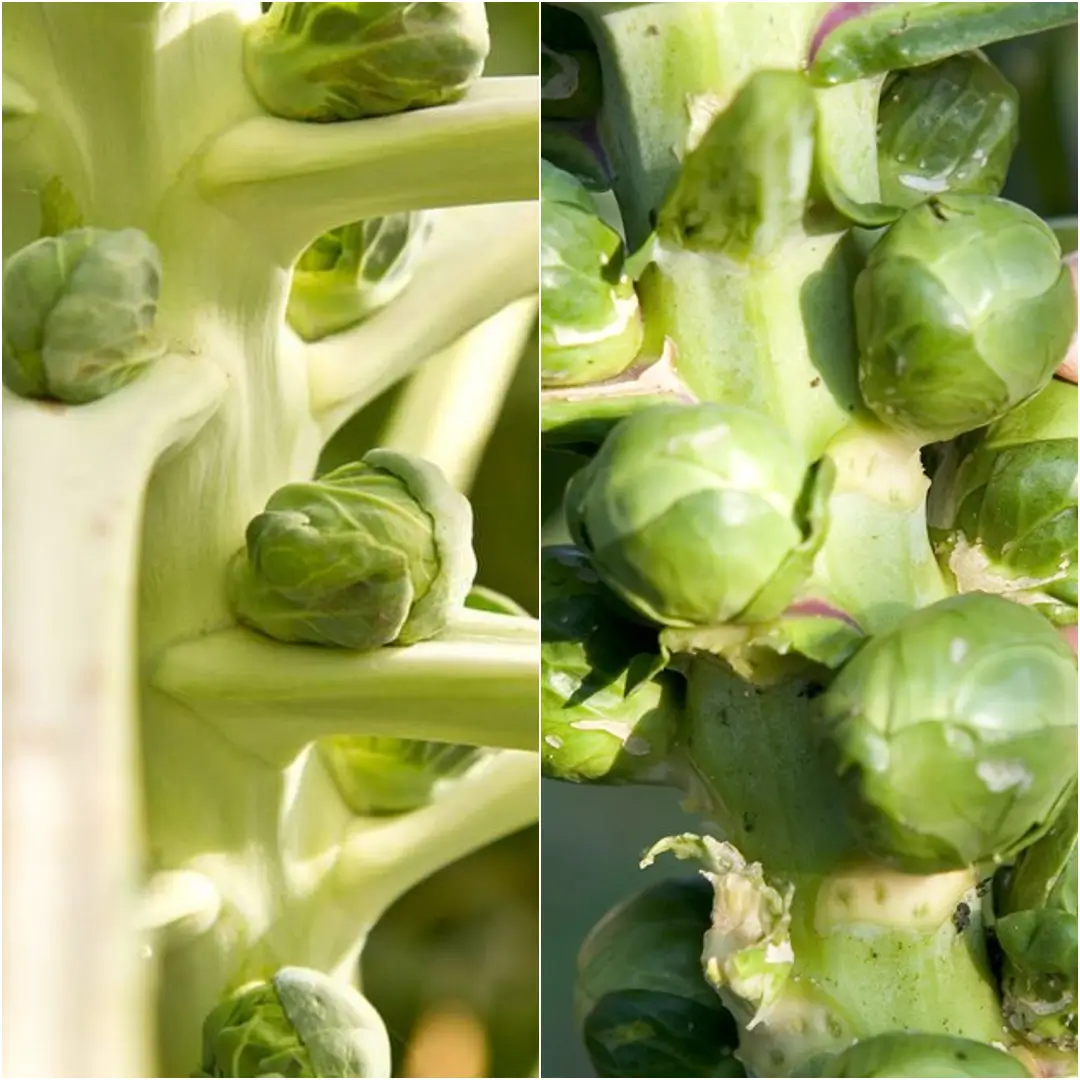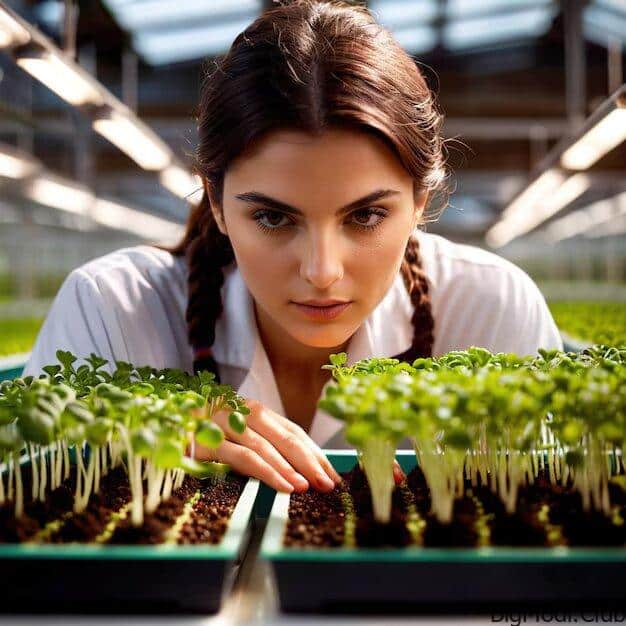Brussels sprouts are one of those veggies that either you love or you…learn to love! But once you get hooked on their earthy, slightly nutty flavor, they become a must-have in your garden. Whether you’re an experienced gardener or just starting out, growing Brussels sprouts can be a rewarding process. These cool-season vegetables thrive in the right conditions, producing an abundant crop when cared for properly. So, if you’re ready to dig in and learn how to grow Brussels sprouts, let’s dive into all the juicy details!
What Are Brussels Sprouts?
Before we get our hands dirty, let’s talk a bit about what Brussels sprouts are. These miniature cabbage-like vegetables grow on tall stalks and are a part of the cruciferous family, which also includes broccoli, kale, and cauliflower. They’re rich in nutrients like vitamin C, fiber, and antioxidants, making them a great addition to any diet. But, of course, the real joy comes from growing them yourself and reaping the rewards of your hard work.
Choosing the Right Conditions for Growing Brussels Sprouts
Cool-Season Lovers
Brussels sprouts are cool-season vegetables, meaning they don’t appreciate the heat. These plants thrive when the temperatures are cooler and generally mature in the fall, after being kissed by a few frosts. In fact, a touch of frost can enhance their flavor, making the sprouts sweeter and more tender.
Sunny Locations
When it comes to sunlight, Brussels sprouts love a sunny spot in your garden. Pick a location that gets 6-8 hours of sunlight per day to encourage robust growth. Shade, while helpful for some plants, isn’t ideal for Brussels sprouts. They need all the sunlight they can get to develop those firm, compact sprouts.
Soil Preparation: The Foundation of Success
Fertile and Well-Drained Soil
Brussels sprouts prefer fertile, well-drained soil that’s rich in organic matter. You’ll want to incorporate plenty of compost or well-rotted manure into your garden bed before planting. Good soil structure is key to allowing your plants’ roots to dig deep and access the nutrients they need.
Testing Your Soil
It’s always a good idea to do a soil test before planting. Why? Because this will give you a good idea of your soil’s pH and nutrient levels. Brussels sprouts prefer slightly acidic to neutral soil with a pH of around 6.0 to 6.8. If your soil is too acidic, you can adjust it with lime; if it’s too alkaline, sulfur can help bring the levels down.
Fertilization Before Planting
Once you have your soil test results, follow the recommendations for fertilizer application. In general, you should mix in a complete fertilizer before planting to give your sprouts the nutrients they need to thrive. Work the fertilizer into the top 6 inches of the soil to ensure even distribution.
Planting Brussels Sprouts: Seeds or Transplants?
Starting from Seeds
Brussels sprouts can be grown from seeds or transplants. If you choose seeds, plant them ¼-½ inch deep in seed-starting trays or directly into your garden. When the seedlings have 3-4 true leaves, it’s time to thin them out or transplant them to their permanent spot in the garden.
Transplanting
Transplants should have 4-6 mature leaves and a strong root system before they’re ready to go into the ground. Generally, this takes 6-7 weeks of growing time indoors. Transplant them 12-18 inches apart, ensuring there’s enough room between each plant to grow and flourish.
Planting Time
Brussels sprouts need cool temperatures to develop properly, so plant them in early summer for a fall harvest. Seeds can be planted at the same time as transplants, but just make sure they’re in the ground early enough to allow for full maturity before the first frost.
Watering Brussels Sprouts
Deep and Infrequent Watering
When it comes to watering, Brussels sprouts aren’t too needy. They prefer deep and infrequent watering rather than shallow, frequent watering. Aim for 1-2 inches of water per week, but always check your soil to see if it’s drying out. You want to maintain even soil moisture throughout the growing season, which helps prevent issues like splitting or bitter-tasting sprouts.
Drip Irrigation and Mulching
Drip irrigation is a fantastic method to water Brussels sprouts efficiently while conserving water. If you don’t have drip irrigation, no worries! Just make sure to water deeply at the base of the plant. Applying organic mulch such as straw or shredded leaves around the plants can help retain moisture and keep the soil cool.
Fertilizing Brussels Sprouts
When to Fertilize
To encourage healthy plant growth, apply a nitrogen-based fertilizer (like 21-0-0) 4 and 8 weeks after transplanting. Use about ½ cup per 10 feet of row. But here’s the important part: don’t fertilize once the sprouts start forming. Too much nitrogen can cause loose, soft sprouts and even lead to splitting.
Side-Dressing with Fertilizer
When applying fertilizer, place it about 6 inches away from the plant base to avoid direct contact with the roots, which can burn them. Then, gently water it into the soil to ensure proper absorption.
Mulching and Protecting Your Plants
Plastic and Organic Mulches
Mulching is a gardener’s best friend when it comes to conserving water and keeping weeds at bay. You can use plastic mulch to keep the soil warm early in the growing season and organic mulches like straw or shredded leaves to keep the soil cool as temperatures rise.
Row Covers for Pest Protection
Pests can be a real nuisance when growing Brussels sprouts, so consider using row covers early in the season to keep insects away from young plants. These covers can also protect against late frosts if necessary.
Common Problems When Growing Brussels Sprouts
Weeds
Weeds can quickly become a problem if you’re not careful. Mulching helps reduce weed growth, but you’ll still need to keep an eye out for unwanted plants. Be careful when pulling weeds not to damage your Brussels sprouts’ roots.
Insects
Brussels sprouts are prone to pests like aphids, cabbage worms, and flea beetles. Regularly inspect your plants and use insecticidal soap, biological measures, or appropriate insecticides to control these pests.
Diseases
One common disease is Alternaria Leaf Spot, which causes spots to form on the leaves and heads. To prevent this, avoid overhead watering, apply fungicides, and practice crop rotation.
How to Harvest Brussels Sprouts
When to Harvest
Brussels sprouts are ready to harvest when the individual sprouts reach about 1 inch in diameter. Start harvesting from the bottom of the plant, where the sprouts mature first, and work your way up. You can twist or cut them off the stem, but be gentle to avoid damaging the plant.
Improving Sprout Size
To encourage uniform sprout development, remove the growing point at the top of the plant in mid-to-late August. This helps the plant focus its energy on sprout formation rather than further stem growth.
Storing Brussels Sprouts
Once harvested, Brussels sprouts can be stored in the fridge for a few weeks. If you want to store them for longer, keep them at 32°F with 95% relative humidity, and they can last for 2-6 months. Keep in mind that Brussels sprouts can develop a bitter taste if stored near ethylene-producing fruits like apples or pears.
Growing Brussels sprouts may require a bit of patience, but the reward is worth it! From preparing the soil to harvesting the delicious, home-grown sprouts, this cool-season crop is a fantastic addition to any garden. Remember, Brussels sprouts love cooler temperatures, require deep watering, and thrive with proper fertilization and pest control. Whether you’re growing them for their nutrition-packed punch or just love the taste, following this guide will help you produce a bountiful harvest. So, what are you waiting for? Get out there and start growing your own Brussels sprouts today!
FAQs
How do you grow Brussels sprouts for beginners?
Growing Brussels sprouts as a beginner is all about timing and preparation. Start by planting in early summer for a fall harvest, as Brussels sprouts thrive in cooler temperatures. Choose a sunny spot with fertile, well-drained soil, and make sure to water deeply. Fertilize regularly during early growth, but stop when the sprouts begin to form. Keep an eye on pests, and use mulch to conserve water and reduce weeds.
How long do Brussels sprouts take to grow?
Brussels sprouts take around 80-100 days to mature after transplanting. However, the exact time may vary depending on the variety and growing conditions. Be patient, as the flavor improves after a frost or two.
Do Brussels sprouts come back every year?
No, Brussels sprouts are biennial plants. This means they complete their life cycle in two years, but they are typically grown as an annual in most gardens. Once you harvest the sprouts, the plant is usually removed and does not regrow the following year.
Are Brussels sprouts easy to grow inside?
Growing Brussels sprouts indoors can be challenging due to their need for a lot of light and space. They prefer cooler outdoor temperatures, so unless you have a large indoor space with grow lights and proper ventilation, it may be difficult to replicate the conditions they thrive in. They do best in an outdoor garden or large containers on a patio.


